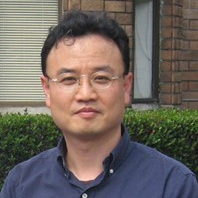Advanced Nondestructive Evaluation and Characterization of Surface
A special issue of Coatings (ISSN 2079-6412).
Deadline for manuscript submissions: closed (20 July 2021) | Viewed by 38999
Special Issue Editors
Interests: ultrasonic guided wave; nondestructive evaluation; nonlinear ultrasonic NDT
Special Issues, Collections and Topics in MDPI journals
Special Issue Information
Dear Colleagues,
Nondestructive evaluation (NDE) is an interdisciplinary field, which has been developed rapidly over recent decades as an important tool for damage detection, quality assessement and material characterization. Initiation and progression of degradation or cracks generally occurs on the surface of industrial components. This Special issue of Coatings is poised to collect original scientific or technical research articles and review papers relaed to advanced nondestructive evaluation and characterization of surfaces in solid structures. Especially, novel theoretical and experimental appraochs, with improved sensitivity, characterization capability, and efficiency of measurement, are of interest.
In particular, the topics of interest include, but are not limited to:
-
Surface waves based nondestructive evaluation
-
Surface cracks detection
-
Characterization of surface properties
-
Online monitoring of structural surface
Prof. Dr. Youn ho Cho
Prof. Dr. Weibin Li
Guest Editors
Manuscript Submission Information
Manuscripts should be submitted online at www.mdpi.com by registering and logging in to this website. Once you are registered, click here to go to the submission form. Manuscripts can be submitted until the deadline. All submissions that pass pre-check are peer-reviewed. Accepted papers will be published continuously in the journal (as soon as accepted) and will be listed together on the special issue website. Research articles, review articles as well as short communications are invited. For planned papers, a title and short abstract (about 100 words) can be sent to the Editorial Office for announcement on this website.
Submitted manuscripts should not have been published previously, nor be under consideration for publication elsewhere (except conference proceedings papers). All manuscripts are thoroughly refereed through a single-blind peer-review process. A guide for authors and other relevant information for submission of manuscripts is available on the Instructions for Authors page. Coatings is an international peer-reviewed open access monthly journal published by MDPI.
Please visit the Instructions for Authors page before submitting a manuscript. The Article Processing Charge (APC) for publication in this open access journal is 2600 CHF (Swiss Francs). Submitted papers should be well formatted and use good English. Authors may use MDPI's English editing service prior to publication or during author revisions.






